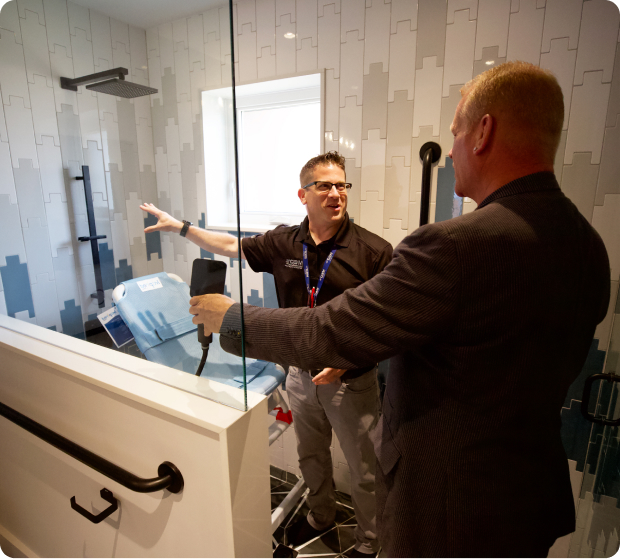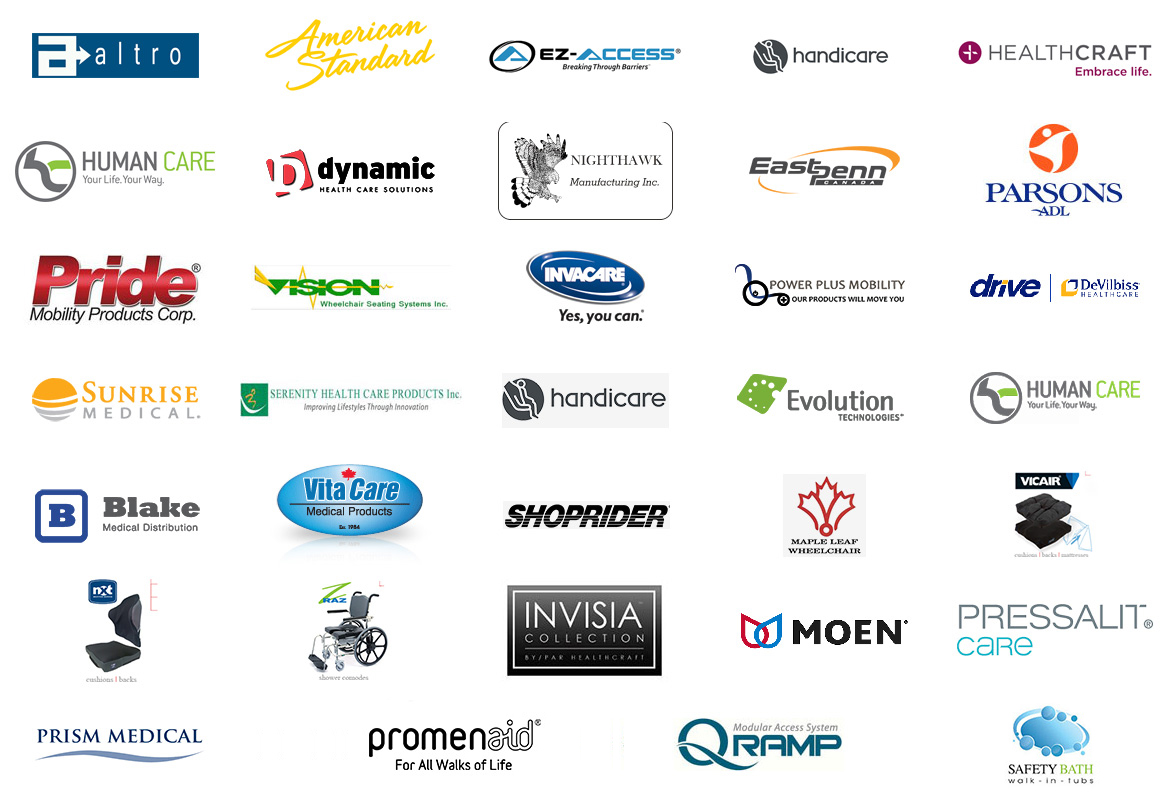Benefits of Home Modifications for Accessibility
Wednesday, July 24th, 2024, 7:28 pm , Posted by MED +
The one thing that is constant in life is change. There will come a time when you need to make some modifications to your home to make it more accessible. This can happen for many reasons – mobility issues, to improve safety, or making your home more suitable as you age.
Accessibility is important and home modification is one way to not only make your home more accessible but also safer. Below, we wanted to highlight the top benefits of home modifications for accessibility if you are thinking about making some changes to your home. Here’s a breakdown of its key benefits:
Independence and Safety
Many people want to stay in their homes as they age. They want to remain independent but also be safe.
Even temporary injuries can make navigating stairs or reaching high cabinets difficult. Accessibility features minimize the risk of accidents for everyone in the home.
One way to create a safer environment is to follow a universal design. Accessible features benefit everyone, not just those with permanent disabilities. Think about someone recovering from surgery, a young child, or a visitor using a cane.
Reduced Fall Risk
Modifying your home can help you identify and remove fall risks in different areas. Here are some things you can install in your home to improve accessibility:
- Grab Bars and Handrails: Installed in bathrooms, hallways, and near stairs, grab bars provide sturdy support for standing, maneuvering, and transferring weight. This significantly reduces the risk of falls, a leading cause of injuries for seniors and individuals with mobility limitations.
- Ramps and Stair Modifications: Replacing stairs with ramps or installing stairlifts eliminates the fall hazard completely. Additionally, adding non-slip treads and better lighting to stairs can improve safety.
- Clear Floor Surfaces: Removing loose rugs, clutter, and uneven flooring creates a smooth, level path for walking and reduces tripping hazards.
Improved Manoeuvrability
A key part of making your home more accessible is to create more space and create easier access to things. Here are some ways to do it:
- Wider Doorways and Hallways: Wider doorways and hallways allow for easier movement with wheelchairs, walkers, or other mobility aids. This promotes independence by facilitating navigation throughout the home.
- Lowered Countertops and Shelves: Lowering countertops and making shelves accessible eliminates the need for reaching or bending, reducing strain and the risk of falls.
- Accessible Showers and Bathtubs: Walk-in showers with grab bars and handheld showerheads are safer and easier to use than bathtubs. Raised toilet seats can also improve accessibility and comfort.
Increased Value and Wider Appeal
A perk of making your home more accessible is that it is unique. This can increase your home value. Making your home accessible can increase its resale value, attracting a wider pool of potential buyers, including seniors and people with disabilities. Even if you don’t need accessibility features now, incorporating them during renovations can save money and hassle down the road.
Social Inclusion and Equity
One of the main reasons people choose to modify their homes is because they want to maintain an independent and social lifestyle. They don’t want to give up their lives because of changes in mobility or health conditions. Accessible homes allow everyone to participate fully in domestic life, fostering a more inclusive environment. Accessibility features empower people with disabilities to live with greater autonomy and control over their daily lives.
Increased Control and Confidence
New technology has made it possible for people to have more control over how they live with the click of a button. Here are some unique ways to have more control over your home:
- Smart Home Features: Voice-activated controls for lighting, thermostats, and appliances can provide greater independence for people with limited mobility or dexterity.
- Lever Handles and Automatic Doors: Replacing doorknobs with lever handles or installing automatic doors makes it easier to open doors without assistance, fostering a sense of self-reliance.
- Improved Lighting: Installing brighter lighting throughout the home, particularly near stairs and in bathrooms, improves visibility and reduces the risk of falls at night or in dimly lit areas.
These modifications, along with many others, work together to create a safe and accessible environment. This empowers individuals to perform daily tasks independently, reducing their reliance on others. Overall, home accessibility is an investment in safety, comfort, and creating a livable space for everyone. It allows people of all abilities to navigate their homes with ease and dignity.
Read More From Our Blog
6 Ways to Make Your Home More Accessible for Wheelchair Users
5 Ways to Improve Home Accessibility for the Elderly or Disabled
Browse Blog Topics
- MED+ Partners with Holmes on Homes: Building a Legacy
- 7 Reasons Why a Hospital Bed Could Be a Good Investment for Improved Home Care of a Loved One
- 8 Ways to Make a Home Wheelchair Accessible
- Walkers vs. Rollators: Which is Right for You?
- 5 Ways MED+ Works with Occupational Therapists to Enhance Mobility & Accessibility for Patients





